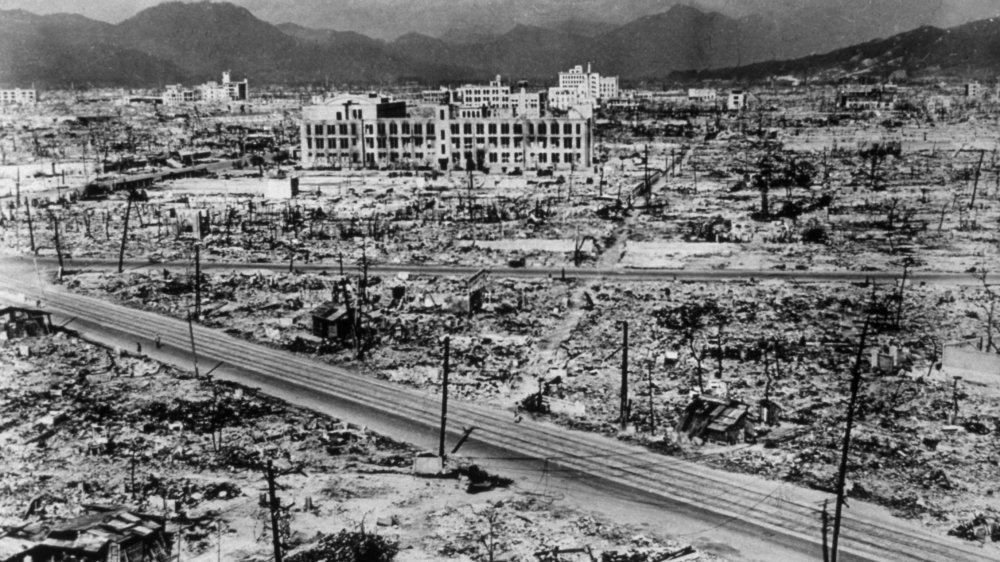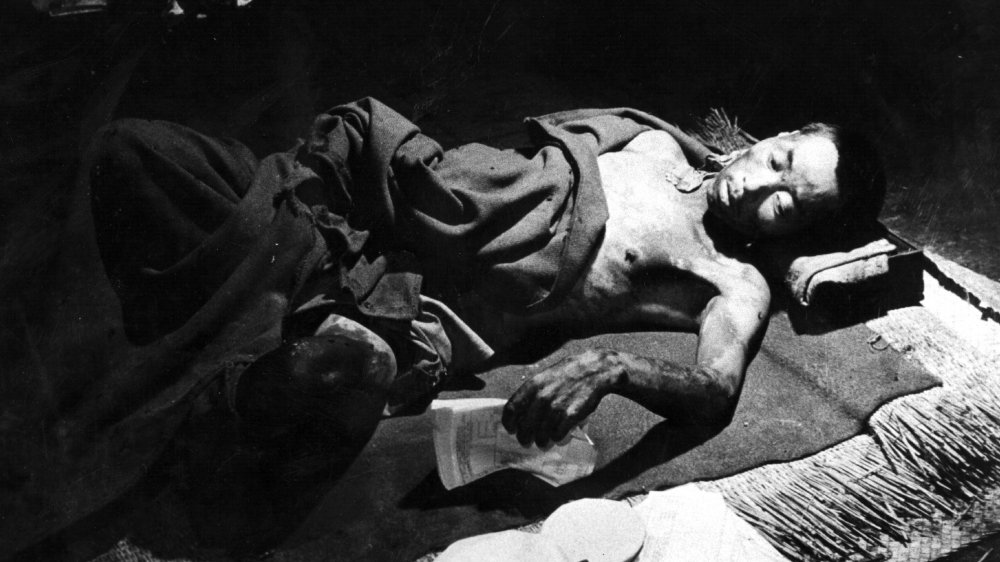Here's How Many People Died During The Bombing Of Hiroshima
If you grew up in the United States, you're familiar with a certain elementary school narrative regarding World War II, about how the U.S. triumphantly "ended the war" by dropping atomic bombs on Hiroshima and Nagasaki. The truth? Well, it's a bit more complex, as usual. For one, the Soviet Union's simultaneous battle to defeat Germany often doesn't get enough attention, and as the Washington Post points out, some have calculated that the U.S.S.R. lost 80 soldiers for every one U.S. soldier lost. Two? Not only do contemporary historians question whether bombing Japan actually accomplished anything for the war effort, but according to the Nation, so did top U.S. military leaders of the time, such as then-General Dwight Eisenhower: They believed that Japan was already on the verge of surrender, anyway, which meant that destroying these two cities — which were mostly filled with women, children, and the elderly, since the young men were away at war — was not only "unnecessary," but deeply immoral.
Ethical problems aside, if there's one fact that's indisputable, it's that these two bombings took an unimaginable number of civilian lives. In Hiroshima, according to History, 80,000 people were wiped away in the blink of an eye. Nagasaki, meanwhile, saw about 40,000 instant deaths. However, the final death toll of these bombings would prove to be much, much larger.
When spread out over time, the death toll is much higher
The instant impact of the atomic bombs was terrifying enough, but the residual effects lingered long afterward. In Hiroshima, as explained by the BBC, the explosion's heat spread fires across the city for another three days, trapping many individuals in their homes, and leading to more deaths. Yet more people died from radiation sickness. All in all, the death toll was estimated at 135,000, including not just Japanese residents, but also Korean forced laborers, American POWs, and more. This number is probably too conservative, as Colombia University points out, since the decimation of entire families meant that there were sometimes no relatives left to record people's deaths. Even those estimates don't properly capture the stark reality of the situation, though, because they only include fatalities from the first few months after the bomb, and not the long-term realities of radiation exposure — namely, cancer.
Two years after the bombing, survivors started coming down with higher rates of leukemia, with one estimate putting their risk of developing this condition at around 46 percent. A similar increase in other cancers took a bit longer to manifest, but was noted by 1956. All in all, this means that the true impact that these bombings had on human life, as a whole, will never be known — but the toll was certainly far higher than any estimates ever could be.

